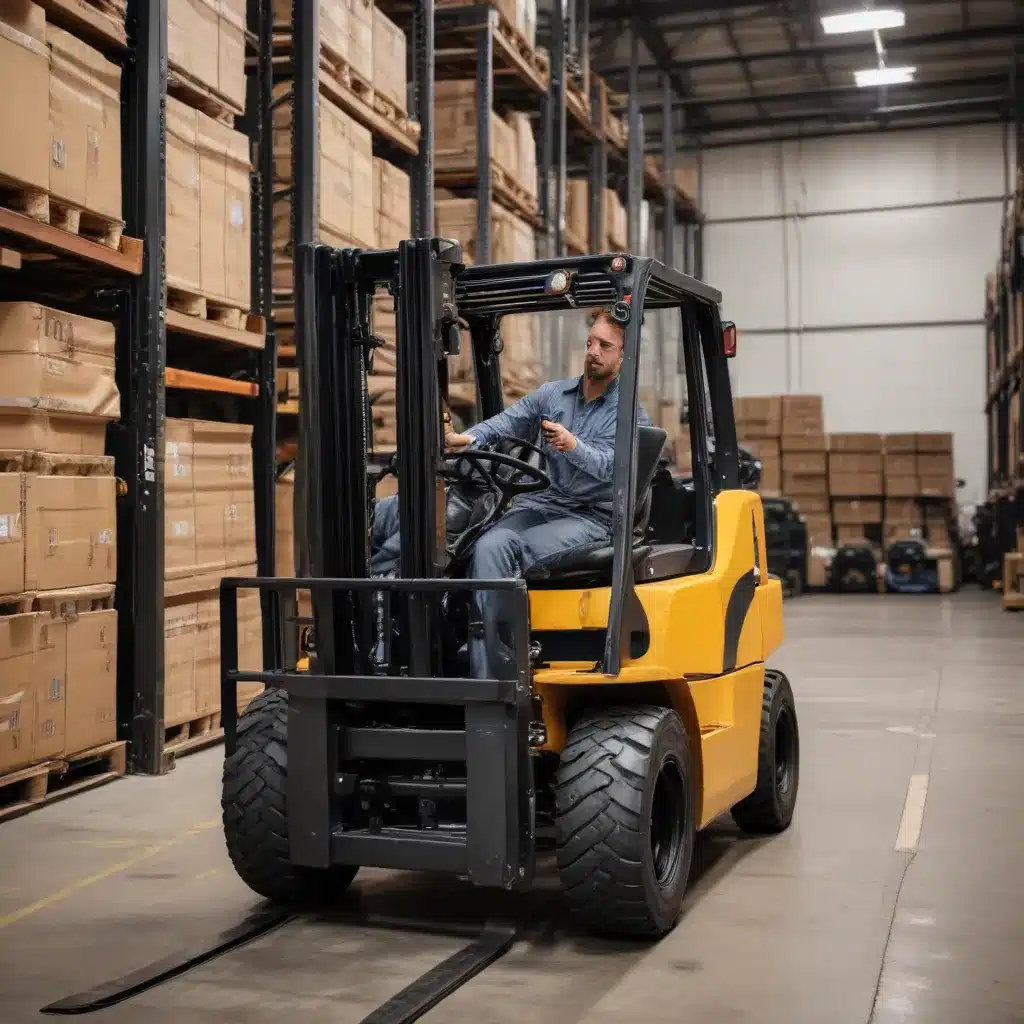
Maximize Forklift Fleet Utilization and Operational Efficiency
As a seasoned industry expert in forklifts, warehousing, and logistics, I’ve seen firsthand how optimizing forklift fleet productivity can significantly impact a business’s bottom line. In this comprehensive guide, I’ll share practical tips and in-depth insights to help you unlock maximum efficiency across your forklift operations.
Prioritize Ergonomics for Enhanced Safety and Productivity
Ergonomics plays a vital role in ensuring warehouse safety, preventing injuries, and enhancing overall efficiency. By implementing proper ergonomic principles, you can create a more comfortable and productive work environment for your forklift operators and warehouse staff.
Prevent Musculoskeletal Disorders (MSDs): Repetitive tasks, heavy lifting, and prolonged standing can lead to MSDs like back pain, strains, and sprains. Provide adjustable workstations, use lifting aids like pallet jacks and forklifts, and train employees on proper lifting techniques to reduce the risk of these injuries.
Improve Workflow and Efficiency: Ergonomically designed workstations and equipment can help employees work more comfortably and efficiently, leading to increased performance and reduced fatigue. This, in turn, minimizes errors and boosts the overall speed and accuracy of tasks.
Promote Employee Well-Being: Investing in ergonomics demonstrates a commitment to employee well-being, which can contribute to increased engagement, morale, and loyalty. Provide ergonomic training and encourage open communication about any discomfort or pain to empower your workforce.
Ensure Compliance with Safety Regulations: Many industry regulations, such as those set by OSHA, include specific ergonomic requirements. By prioritizing ergonomics, you can ensure compliance and avoid costly penalties.
Implement Efficient Material Handling Practices
Effective material handling is crucial for optimizing warehouse operations and reducing costs. By implementing best practices, you can streamline your processes and enhance the productivity of your forklift fleet.
Choose the Right Forklift Equipment: Invest in high-quality forklifts that are well-suited to your warehouse’s specific needs. Whether you require electric forklifts for indoor use or gas-powered models for outdoor applications, selecting the appropriate equipment can significantly improve material handling efficiency.
Optimize Warehouse Layout: The layout of your warehouse has a direct impact on material handling efficiency. Evaluate your current layout and identify areas for optimization, such as rearranging storage areas, creating designated pick-up and drop-off zones, and minimizing travel distances.
Utilize Proper Storage Techniques: Implement appropriate storage solutions, like pallet racking systems, to maximize vertical space and enable efficient stacking and retrieval of goods. Properly labeling and managing your inventory will also provide visibility and enable efficient picking and replenishment.
Leverage Technology-Driven Solutions: Advancements in technology, such as cost-tracking software and automation, can greatly improve the accuracy, speed, and overall efficiency of your material handling processes. Explore opportunities to streamline workflows, implement automation, and optimize your forklift fleet’s utilization.
Unlock Forklift Fleet Efficiency through Centralized Management
Effective forklift fleet management is essential for maximizing productivity and reducing operational costs. By centralizing your forklift data and maintenance processes, you can gain valuable insights and optimize your fleet’s performance.
Centralize Forklift Fleet Information: Organize your entire forklift fleet information in one centralized location. This includes details on equipment specifications, maintenance history, lease expirations, and more. Having this data readily available empowers you to make informed decisions about your fleet.
Track Maintenance Costs and Identify High-Cost Units: Closely monitor the maintenance costs associated with each forklift in your fleet. This will help you identify units that are incurring disproportionately high maintenance expenses, allowing you to take corrective action, such as replacing or reassigning them.
Maintain Visibility on Expiring Leases: Keep a close eye on the lease expiration dates of your forklift fleet. By proactively managing lease renewals or replacements, you can ensure your equipment remains up-to-date and well-suited to your operational needs.
Leverage Fleet Management Software: Invest in specialized forklift fleet management software to streamline your operations. These tools can provide real-time visibility into your fleet’s performance, maintenance schedules, and cost data, empowering you to make data-driven decisions.
Prioritize Forklift Operator Training and Safety
Forklift operator training and safety are critical components of maintaining an efficient and productive forklift fleet. By prioritizing these areas, you can minimize the risk of accidents, reduce downtime, and ensure your operators are equipped to handle your equipment effectively.
Provide Comprehensive Forklift Operator Training: Implement a robust training program that covers proper operating techniques, safety protocols, and equipment-specific instructions. Ensure all operators are certified and regularly refreshed on best practices to maintain a high level of competence.
Enforce Safety Protocols and Procedures: Establish and enforce strict safety protocols within your warehouse or facility. This includes the use of personal protective equipment (PPE), adherence to traffic patterns, and regular equipment inspections.
Foster a Culture of Safety: Encourage open communication and establish a culture where safety is a top priority. Empower your employees to report any concerns or observed hazards, and promptly address them to maintain a safe working environment.
Implement Forklift Telematics and Monitoring: Leverage forklift telematics and monitoring systems to track operator behavior, monitor equipment usage, and identify potential safety risks. This data can inform your training programs and enable proactive maintenance to prevent accidents.
By incorporating these forklift productivity hacks into your operations, you can unlock maximum efficiency, enhance safety, and drive tangible cost savings for your business. Remember, a well-managed, properly maintained, and safely operated forklift fleet is the foundation for a thriving warehouse or logistics operation.
For more information on how Forklift Reviews can help you optimize your forklift fleet and warehousing operations, please don’t hesitate to reach out. Our team of industry experts is here to provide specialized guidance and tailored solutions to meet your unique needs.

